Hebei pig and soybean meal research report
Research background and purpose:
According to the seasonal law, the fourth quarter is the period of concentrated fattening of pigs, and it is also the peak season of soybean meal consumption. We visited Hebei to investigate, in order to understand the situation of pig stocks, and try to understand the production and sales of feed, feed formula, days of use of soybean meal stocks, etc., to provide evidence for soybean meal consumption and later trend judgment.
Research Objects:
I. Shijiazhuang: (1) The 18th Hebei Animal Husbandry Expo 2017; the 15th “Baiwei Antai Cup†breeding pig auction in Hebei Province, investigated Hebei Xingda Feed Group, Shijiazhuang Feilong Feed Co., Ltd., Muyuan 002714 , Diagnostics , Hetiantian Feed Co., Ltd. (2) Cargill Purina (Langfang) Feed Co., Ltd.
2. Xingtai Nanhe County: (1) Local distributor of concentrates, premixes and veterinary drugs. (2) Local farmers.
Third, Hengshui: Jiahe farming and animal husbandry local farms
Fourth, Cangzhou: DBN 002,385, attending local feed dealer stocks
main conclusion:
First, the environmental protection pressure is huge, and the number of sows in Hebei has not increased significantly.
Second, Hebei mixed feed accounts for half of the country, soybean meal demand has a certain rigidity
The third and fourth quarters are the peak season for soybean meal consumption.
Research background and purpose
According to the seasonal law, the fourth quarter is the period of concentrated fattening of pigs, and it is also the peak season of soybean meal consumption. We visited Hebei to investigate, in order to understand the situation of pig stocks, and try to understand the production and sales of feed, feed formula, days of use of soybean meal stocks, etc., to provide evidence for soybean meal consumption and later trend judgment.
Research Objects
1. Shijiazhuang: (1) The 18th Hebei Animal Husbandry Expo 2017; the 15th “Baiwei Antai Cup†breeding pig auction in Hebei Province, investigating Hebei Xingda Feed Group, Shijiazhuang Feilong Feed Co., Ltd., Muyuan, Hebei Fangtian Feed Co., Ltd. (2) Cargill Purina (Langfang) Feed Co., Ltd.
2. Xingtai Nanhe County: (1) Local distributor of concentrates, premixes and veterinary drugs. (2) Local farmers.
Third, Hengshui: Jiahe farming and animal husbandry local farms
Fourth, Zhangzhou: Dabei Nong local feed distributor
main conclusion
First, the environmental protection pressure is huge, and the number of sows in Hebei has not increased significantly.
According to Breck's data for 2014 and 2015, the number of live pigs in Hebei Province ranked 7th in the country in 2015. In 2014, the number of sows in the country was ranked 10th in the country. Breck's historical data comes from the Animal Husbandry Yearbook, and the national data from the most recent year comes from the Bureau of Statistics. It is still inconclusive whether the data is older and can represent the real situation. However, according to our research object, Hebei's capable sow herd is ranked 5th in the country and is in the middle and upper reaches of the country. Due to its location in the main maize producing area of ​​the North China Plain, Hebei is suitable for pig breeding. Although the water network is not as dense as the south, it is also facing significant pressure from the environment. In all the counties and cities in Hebei, the environmental protection policies are strictly enforced. According to the regulations, the farms adjacent to roads, rivers and villages are facing the danger of environmental upgrading or demolition. Many farms have already been eliminated. Hebei's moderate-scale family farms are the main breeding industry, and because of their strong sense of responsibility and lack of labor and labor costs, this family farm has the highest production efficiency and considerable profitability. Their common breeding costs are below 6 yuan/kg or even lower. . However, due to environmental protection, most farmers of this size currently say that they will not expand the size of the sows and maintain the status quo. In contrast, the scale of farming of large-scale enterprises is steadily expanding. It is represented by Jiahe Farming and Animal Husband, which we visited. Its scale in a farm in Hengshui Shenzhou is 1,500 pigs, and it is actively expanding its production scale. The rapid withdrawal of free-range breeding and the expansion of scale farms have made Hebei's overall inventory increase compared with 2016, but there has not been a significant increase in environmental protection pressure.
Soybean crushing-feed-breeding-deep processing in the entire industrial chain, not only the breeding sector is under pressure from environmental protection, it is understood that the feed mill is also a highly polluting enterprise comparable to the cement industry, so it is frequently limited by environmental protection, feed distributors said this year There was no significant increase in feed production and sales. Everyone agrees on the future price of pigs: the era of profitable profits of 1,000 yuan in 2016 will never return, but due to many reasons such as environmental protection, pig breeding will enter a reasonable era of profit.
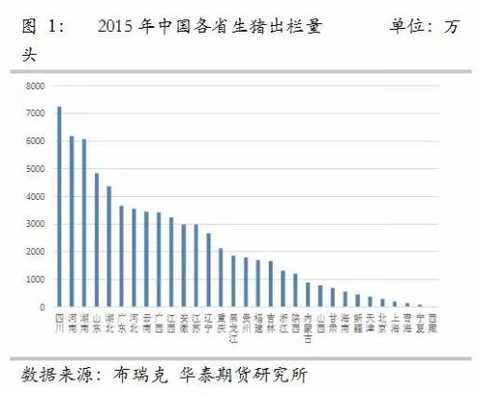
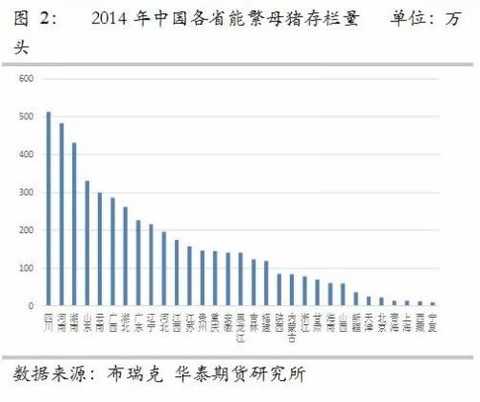
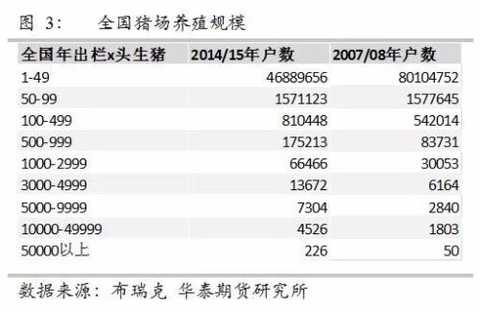
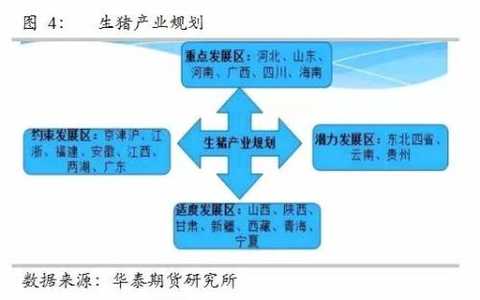
Second, Hebei mixed feed accounts for half of the country, soybean meal demand has a certain rigidity
Hebei is located in the North China Plain, a province with large corn production. According to the statistics of the National Bureau of Statistics in 2015, it is second only to Heilongjiang, Jilin, Inner Mongolia, Shandong and Henan. The annual output is 16.7 million tons. Among the cost of pig breeding, 50-60% is the cost of feed, and corn as the energy source is the feed ingredient with the largest proportion. Therefore, from this point of view, Hebei is in line with the national plan of “developing aquaculture in the main grain producing areas (Northeast) and pork main selling areas (southwest), and is a key development area for breeding.
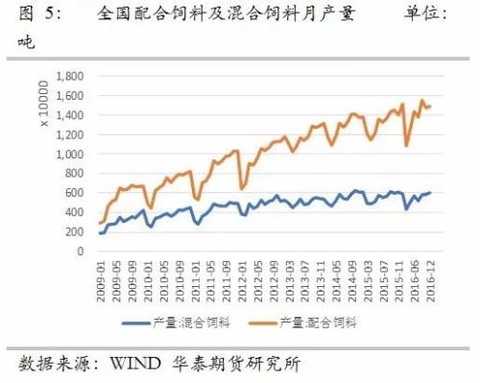
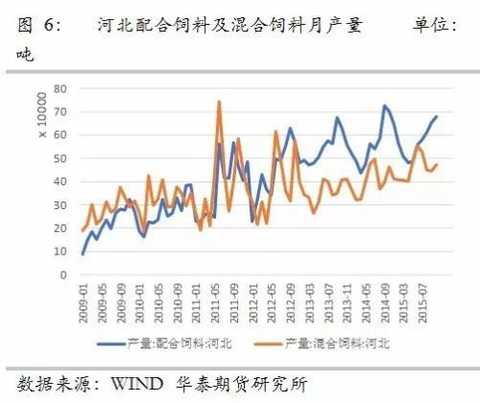
According to WIND data, the growth rate of national compound feed production is significantly greater than that of mixed feed, but for Hebei Province, the difference between the two growth rates is not so obvious. Our research found that farmers and scale farms have different preferences for the use of compound feed/mixed feed. The main farm families we mentioned above are more inclined to use premixes to purchase soybean meal and corn on their own. Because many farmers grow their own corn and premixes, the price of compound feed is also cheaper. For this part of the farmers, the feed formula of pigs in different growth stages is fixed. When purchasing soybean meal, they often go with the market. The amount of soybean meal purchased from local distributors is generally about half a month, and the whole amount of cash is paid. The following is an example of a family farmer in Nanhe County, Xingtai City, Hebei Province, with 40 sows, see Figure 7. Another type of large-scale farms, represented by the Jiahe farms and farms we visited, are more inclined to use compound feed. In addition, many large enterprises adopting the company + farmer model will uniformly sell feed, piglets and medicines to farmers, and the farmers will be responsible for raising them. After fattening, they will be purchased at the booked price. Farmers believe that compound feed may be slightly better than nutrients, but the cost is higher. The choice of compound feed or mixed feed also has a direct impact on the consumption of soybean meal. Generally, farmers who choose premix and concentrated materials have very rigid demand for soybean meal. This rigidity is reflected in the fact that they will not use other protein materials instead. Soybean meal, the second is that their proportion of soybean meal in the feed is very fixed. In the compound feed, the feed mill aims to ensure the nutrition of the feed, and at the same time taking into account the cost considerations, the formula will be adjusted according to the nutritional value and price of the feed ingredients, and the demand for soybean meal is more flexible.
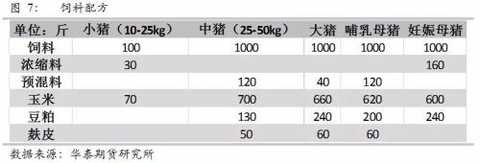
The third and fourth quarters are the peak season for soybean meal consumption.
Because the grassroots research did not involve the heads of the procurement departments of major enterprises, they did not have a deep understanding of their procurement model, days of inventory use, and how to adjust the formula. What we have learned is that the sales radius of feed is relatively short. In addition, the procurement of large groups is usually managed by the headquarters. The feed distributors or farms under the group often only summarize the needs of the region. The group determines the production and the raw materials for production. Purchase quantity. As a mature commodity, soybean meal has been widely used in group purchases.
The fourth quarter is the peak season for soybean meal consumption, which is confirmed by our monthly supply and demand balance sheet or during the research visit. Generally speaking, in order to prepare for the Spring Festival fattening pigs, the supply and demand are particularly strong in the fourth quarter, especially after the Spring Festival; after the Spring Festival, the pig price is generally reduced, and the feed consumption is also greatly diminished.
Finally, we also noticed that large-scale pastures in Hebei Province are also widespread. Because beef cattle are more messy and cannot be counted, the feed in dairy cows also has strict nutrition standards and formulas. The proportion of soybean meal in the feed of lactating cows can also be as high as 20%, so the consumption of soybean meal in dairy feed is also worth our attention. However, due to the lack of data in the cattle inventory, this part has yet to be studied.
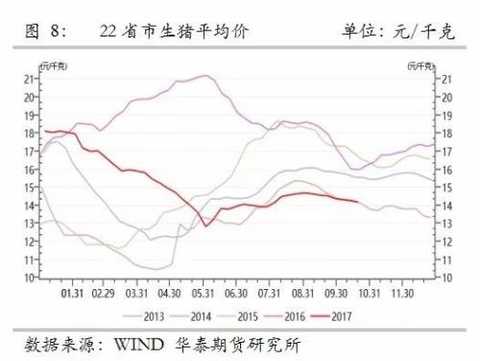
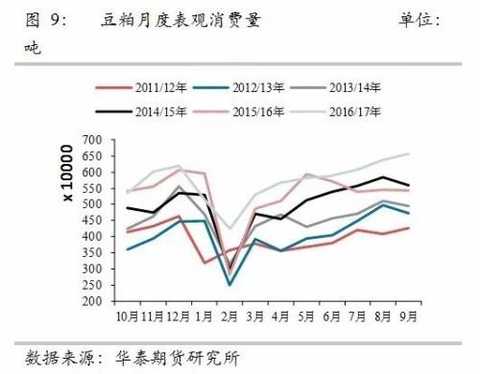
Hebei pig and grass root research report
Event description:
On the occasion of the “18th Hebei Animal Husbandry Expo and the 15th Breeding Pig Auction†held in Hebei Province, we visited some pig farms and feed companies at the exhibition site to try to understand the current farming situation and feed sales in the province. At the same time, we visited Xingtai, Hengshui and some districts and counties in Zhangzhou to further understand the local breeding stocks and the scale of breeding, and provide reference for the overall status and scale of Hebei farming and future development trends.
Core points:
1. The current scale of pig raising in Hebei Province is not high, the breeding is generally dispersed, and large-scale large-scale pastures are relatively few. More than 500 sows accounted for 16% of farms, 200-500 sows accounted for 18%, 30-200 sows accounted for 40%, and 30 sows accounted for 26%. %.
2. There is no brand with high feed sales in Hebei Province, and all feed brands have it. The feed brand with high relative occupancy rate also reflects the poor concentration of pig market in Hebei Province, and the degree of scale is not high. The awareness of modernization and large-scale development of farmers is lagging behind the concept of southern provinces.
3. Visiting the districts and counties to find out that 50 or so female pigs accounted for more than 40% of the farms. The farming hardware conditions are simple, no manure and harmless treatment facilities, and farmers who have been farming for many years have the willingness to expand, but Looking at the national environmental protection policy situation, holding a wait-and-see attitude, there is no expansion plan in the short term to maintain the existing breeding scale.
4. Affected by environmental protection and restriction policies, Baoding North, Zhangjiakou, Chengde, Langfang and Qinhuangdao will be reduced, and the amount of deposits in the southern part of Hebei Province will further increase. Professional fattening households in the province to gradually reduce in the future a further shift of support on behalf of large companies, Bond, New Hope 000 876, attending stocks VI, Anyou, Bronte and other large companies to establish support on behalf of policies in Hebei.
On-site investigation summary
I. "The 18th Hebei Animal Husbandry Expo and the 15th Breeding Pig Auction"
At this expo, we visited the leading breeding enterprises such as Hebei Zhongdao Animal Husbandry, Hebei Muyuan, Hebei Double Pigeon, and Hebei Feilong Feed and Hebei Tiantian. Due to the influence of this year's market, all kinds of pig farms are not very good. I am optimistic about the 18-year market, but the production rhythm is still stable production, there will be no large-scale expansion and increased elimination of sows. Makino is in the stage of new expansion, and has established factories in Xingtai Guangzong, Xinhe, Yuguantao, Zhangzhou Haixing and Hengshui Ganzhou.
The construction of sows will be 20,000, but the progress of capacity expansion will be adjusted accordingly.
The head of Zhongdao Animal Husbandry said that the current price of the sows is 1,800 yuan/head. Since the breeding pigs are mainly supplied to the domestic large-scale pig raising group, the sales volume of the breeding pigs has almost doubled this year. The main reason is the expansion of large-scale enterprises, such as the sales of large enterprises such as Wenzhou, Dongbei Dabei, and New Hope Liuhe in Shandong.
Hebei Fangtian is mainly engaged in the management of pig feed. Its business scope mainly covers the North China market. The sales volume of feed has not increased significantly this year. The main oriented farmers are mainly small and medium-sized retail investors. Based on environmental factors and the loyalty of small and medium-sized retail investors to feed brands is relatively Poor, in the case of too low market conditions will choose cheap premix, this part of the group is not fixed, it is difficult to ensure the stability of feed sales. At the same time, it is also actively developing the pig industry. At present, there are three large-scale pig farms in Hebei Xinji, with 2,500 sows. The 5,000 expansion projects under construction are expected to be put into use in June 2018, and by 2019, the number of sows will exceed 10,000.
Langfang Purina feed sales manager said that the company's sales strategy is based on large-scale pastures. The company's feed sales accounted for 18% of total price, 15% of concentrate and 67% of premix. “Purina†sells pig meat in Hebei Province at a rate of about 7,000 tons per month. It is mainly concentrated in sows, with a market share of only 2% and piglets about 0.1%. Purina's main sales group targets customers such as 50-200 sows on family farms, which account for 40% of the entire market in Hebei. According to the situation of market arranging, the farms with more than 500 sows accounted for 16%, the households with 200-500 sows accounted for 18%, and the households with 30-200 sows accounted for 40%, 30 The proportion of the first sows is 26%. There are about 20 pigs with a scale of more than 1,000 pigs, and the total number of sows in 20 companies is around 60,000. According to the market mastery, the total number of sows in Hebei Province is about 1.5 million, and the number of sows in the scale of more than 1,000 pigs accounts for about 4%. Among them, Baoding, Shijiazhuang, Tangshan and Handan have the largest amount of breeding, and the number of sows is about 200,000. The sows in Zhangzhou, Zhangjiakou, Xingtai, Chengde and Hengshui should be around 100,000. The amount of farming in Langfang and Qinhuangdao is relatively small, and the number of sows is about 50,000.
From the production level of pigs, the production performance of family farms (50-200 sows) is higher than that of 500 sows. The main reason is that family farms are basically husband and wife, and they have strong sense of responsibility for raising pigs. They are willing to accept new things, new technologies and new management concepts. The level of care in feeding management is better than that of large-scale pig farms. Such pig farms are also the mainstream of future development. Their MSY level is around 20, while the MSY of large-scale pig farms can only reach about 18.
2. A feed veterinary drug dealer in Xingtai South and County
According to the dealer, Nanhe County is a relatively large-scale county in Xingtai, and the amount of farming in several surrounding counties is small. There are about 10,000 local sows in the stock. However, the scale of the households is very limited, about 30 farms with more than 100 sows, about 60 farms with 50-100 sows, and about 80-90 pig farmers with less than 50 heads. From the perspective of the habits of the farmers, they tend to self-dosing. Because it is located in the North China Plain, the corn is self-sufficient or locally purchased, and the soybean meal is on the market. Generally, only one week's inventory is purchased. Since labor costs are not included, the cost of raising is basically 5.5-6 yuan / kg. The current selling price of pigs is 6.8-6.9 yuan / kg, and the profit of each pig is still 300-400 yuan / head. The slaughter of pigs is mainly concentrated in local slaughter, and there are not many external adjustments. Visiting local farmers found that many small pig farms with less than 50 sows were more common in raising pigs in the village. Taking into account the implementation of environmental protection policies, there are also spare land. Once the environment is banned, it can be transferred smoothly. Whether to expand the scale or not depends on the next environmental policy situation, and the memory bar remains stable in a short period of time. Since winter is a high season for foot-and-mouth disease and piglet diarrhea, winter will also be affected every year, but timely detection is easy to control, and the loss ratio is not very large. The number of litters in the self-supporting sows is about 12-13, which is acceptable to farmers.
Third, Jiahe farming and animal husbandry (Hengshui Shenzhou) farm
Jiahe Farming and Animal Husband currently has two bases in Hebei. There are 2,400 sows in Zhangjiakou. The Hengshui Shenzhou pig farm has just been replenished in reserve, with a scale of 1,500. The expected date of birth is in the next month. The feeding mode adopts a stocking mode. Because Hefeng shares, all feeds are used. Most of the piglets in Hebei this year were also stocked by Hefeng. Jiahe breeds Dan pigs, the PSY level is relatively high, the average level is 28, and some excellent fields can reach 30 or even higher. The breeding rate in the nursery stage is 97%, and the breeding rate in the fattening stage is 98%. It can be measured that the company's MSY level is 26.6. The future plan for Hebei is 20,000 sows, which are still in the site selection and land acquisition stage. At present, Jiahe Farming and Animal Husband has more than 40,000 sows in the country, and it is expected to reach 50,000 heads next year.
Fourth, the cultivation situation in Zhangzhou area
Visiting the Zhengda customer pig farm in Qingzhou, Zhangzhou, the current sow size is 100, and currently cooperates with Zhengda, using Zhengda's full price. There are plans to further supplement the reserve. Overall, the impact of environmental protection is not great. The local person in charge of Zhengda said that the amount of farming in the Zhangzhou area increased slightly compared to last year. The proportion of small and medium-sized retail investors in Quzhou is also large, and there are few large-scale breeding factories. Zhengda has its own farm in Hebei and sells double sows. Xingtai Zhengda 2400 sows, Qinhuangdao Zhengda 6000 sows. According to the person in charge of sales, the sales of breeding pigs last year was around 15,000, and this year it has sold 20,000. Since the Qinhuangdao pig farm was not put into production last year, overall, sales this year are not as good as last year.
Visit the person in charge of Hebei Dabei Agriculture, Agriculture and Animal Husbandry Food Co., Ltd. in Hezhou Inter-regional Area, and further understand the local breeding inventory and Dabei Nong's layout plan in Hebei. In 2017, Dabei Nong started the pig-raising business in an all-round way. Dabei Nong Group registered 300 million in Hebei Raoyang to establish Hebei Dabei Agriculture, Agriculture and Animal Husbandry Food Co., Ltd. In 2017, it will invest in 6 5,000 sow farms. Yang, Xingtai Neiqiu and other places have started construction; in 2010, 10 5,000 sow farms were invested, 20 5,000 sow farms were invested in 2019, and 12 5,000 sow farms were invested in 2020. In 2025, the company plans to invest 10 million pigs in Hebei, Inner Mongolia, Tianjin and Shanxi. At present, the expansion of 5,000 breeding pigs in Xinghe County, Inner Mongolia has begun to be built. There are about 10,000 sows in the Hejian area, one in 1,000 or more, three in 400, three in 300, two in 200, and two in 100, 50-100. There are 10 households around the head, and the rest are less than 50. Local farmers are mostly premixed, and representative brands include Dabei Nong and Kangdi.
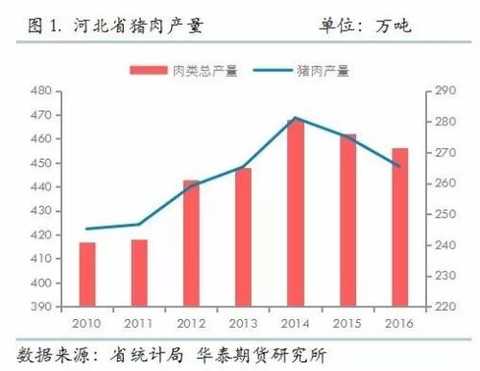
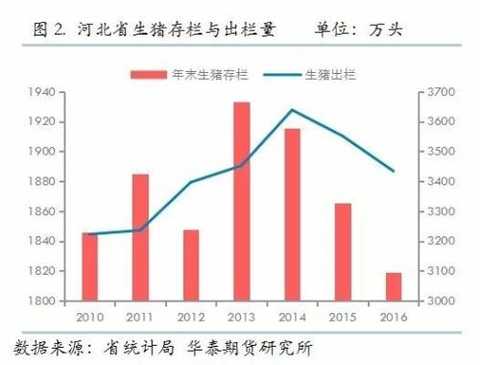
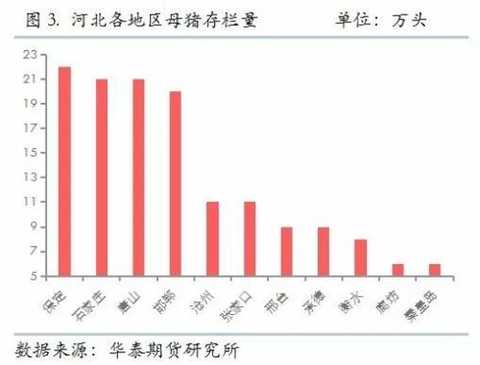
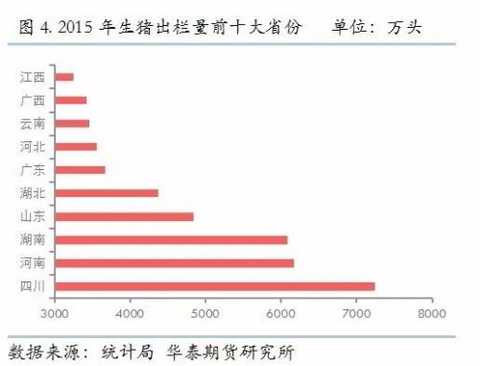
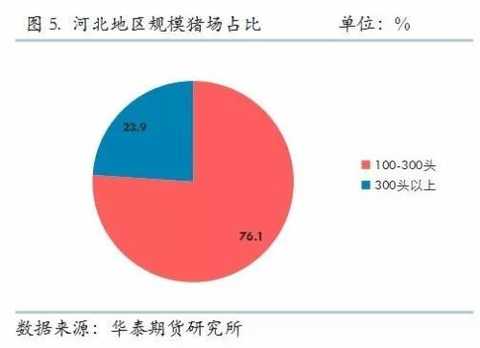
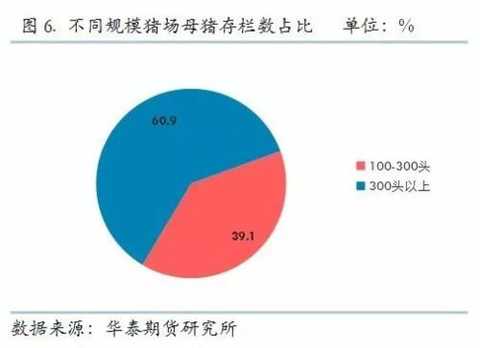
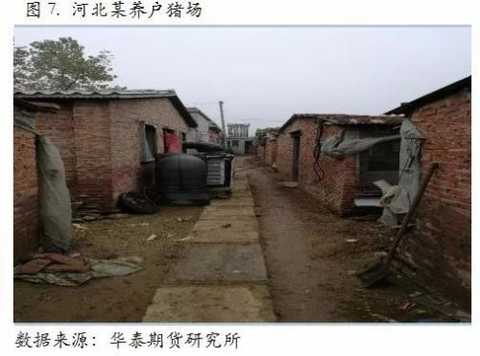
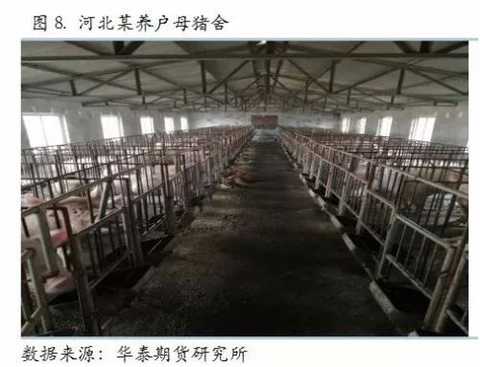
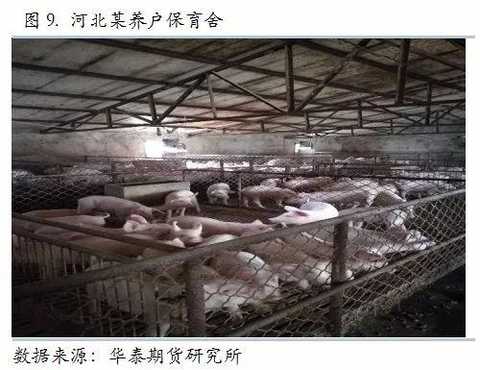
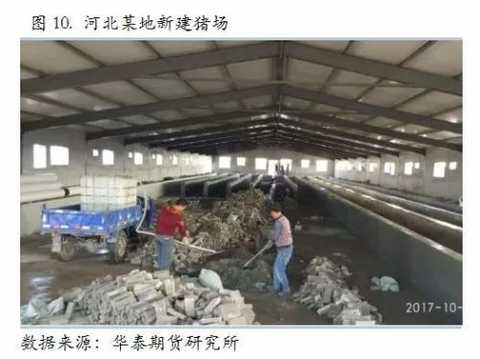
in conclusion
Visiting some districts and counties found that the proportion of small and medium-sized farming in Hebei Province is still about 40%. This part of the farmers can still raise pigs. Once the environmental protection is strict, these farmers may face elimination. Therefore, qualified farmers have the willingness to expand and plan, and the specific implementation depends on the policy direction.
The population around the Beijing-Tianjin and Xiong'an New Areas is strictly banned, and the deposits in Baoding North, Zhangjiakou, Chengde, Langfang and Qinhuangdao will be further reduced. The inventory in the southern part of Hebei Province will continue to increase. The number of professional fattening households in the province is gradually decreasing. In the future, the company will further turn to the generation of large companies. Zhengbang, Xinxiang Liuhe, Anyou, Baodi and other large companies have established a maintenance strategy in Hebei.
Hebei is a key area for pig breeding in the “13th Five-Year†pig raising program. In the next four years, relying on the current foundation, increasing scale, strengthening the comprehensive utilization of manure and improving competitiveness will become one of the core areas for stabilizing pork supply in China. In the long run, the amount of live pigs in Hebei will not shrink. Coupled with the strategic layout of Group companies such as Wenshi, Zhengbang, Muyuan, Twins and Jiahe in Hebei, the production capacity of pigs in Hebei will be further released in the next two years.
Author: Thailand Futures Institute Huang Yuping, Li Wei
Snapback cap is a type of hat that features an adjustable snap closure at the back. It has a flat brim and a structured crown, typically made of wool or cotton. The snapback cap became popular in the 90s and has since remained a staple in streetwear fashion. It is often adorned with logos, graphics, or embroidery, making it a versatile accessory for both casual and formal occasions. The snapback cap is loved by both men and women and can be worn by people of all ages. It is a great way to add a stylish touch to any outfit.
Snapback Hat,New Era Snapback,Snapback Caps,Snap Back Cap
Yantai Belief Cap Co.,Ltd. , https://www.beliefcaps.com